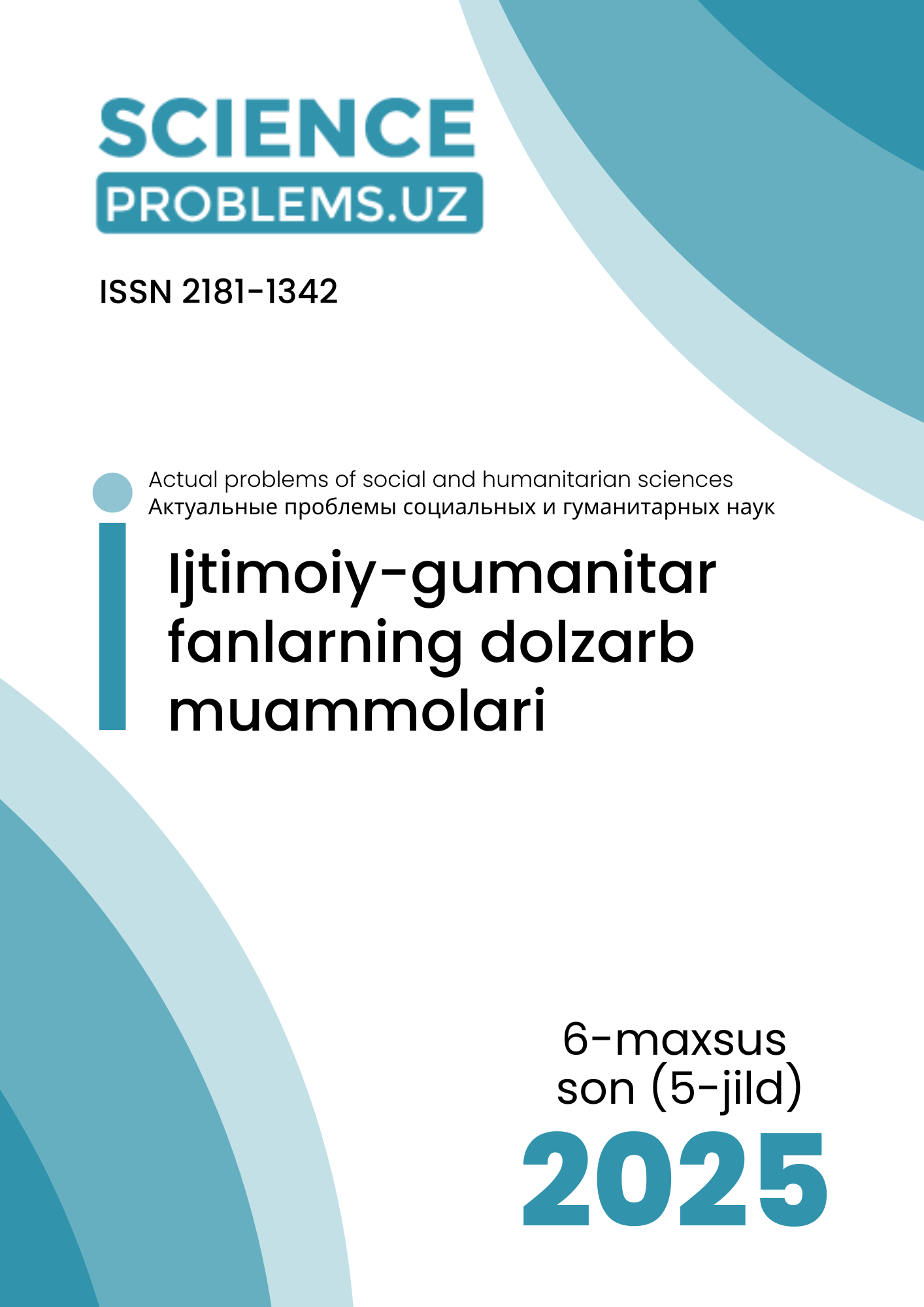LEGAL FRAMEWORKS FOR DIGITAL TECHNOLOGY APPLICATION IN LAND CADASTRE: INTERNATIONAL EXPERIENCES AND PRACTICES IN UZBEKISTAN
DOI:
https://doi.org/10.47390/SPR1342V5SI6Y2025N27Keywords:
land cadastre, cadastral systems, experience, digital technologies, regulatory, international, standardize.Abstract
Land cadastre systems serve as critical instruments in managing and regulating land resources, ensuring transparent property rights, and facilitating effective urban and rural development planning. Traditionally, these systems have relied on manual or semi-automated procedures, which have increasingly become inefficient and prone to inaccuracies due to the rapid pace of urbanization, growing populations, and heightened economic activities.
References
1. Asian Development Bank. (2021). Strengthening Land Administration in Uzbekistan: Digitalization and Reform. Asian Development Bank.
2. Bennett, R. M., & Alemie, T. (2016). Cadastral modernization reforms in the United States: Legal and institutional perspectives. Land Use Policy, 55, 81–93.
3. Bennett, R. M., Pickering, M., & Sargent, A. (2019). The role of legal frameworks in modernizing land administration systems. International Journal of Law and Information Technology, 27(2), 123–145.
4. Decree No. UP 5742. (2019, November 15). Presidential Decree on Measures for Radical Improvement of the Land Cadastre and State Cadastre Systems. Republic of Uzbekistan.
5. Decree No. PP 4417. (2019, June 12). Presidential Decree on Enhancing Transparency in Land Cadastre Management. Republic of Uzbekistan.
6. European Commission. (2007). Directive 2007/2/EC establishing an Infrastructure for Spatial Information in the European Community (INSPIRE). Official Journal of the European Union.
7. Food and Agriculture Organization. (n.d.). Global Land Administration Database. FAO.
8. Geospatial Information Authority of Japan. (2007). Basic Act on the Advancement of Utilizing Geospatial Information. Japan.
9. Hoecke, M. V. (2015). Adapting Legal Traditions: Comparative Law in the Age of Globalization. Cambridge University Press.
10. Lee, J., & Shin, H. (2020). Digital cadastral systems in South Korea: Legal frameworks and institutional innovations. Korean Journal of Surveying and Geospatial Sciences, 38(4), 305–322.
11. Murakami, H., Ogawa, S., & Katoh, K. (2021). Geospatial integration in Japanese land administration: Evaluation of legal frameworks. Journal of Geospatial Information Science, 12(1), 45–61.
12. Paasch, J.-M., & Paulsson, J. (2020). Data privacy and cadastral information: A comparative study of GDPR implications. Journal of Spatial Data Management, 14(2), 98–115.
13. Presidential Administration of Uzbekistan. (2020). Law on Geodesy and Cartography. Republic of Uzbekistan Legal Gazette.
14. Presidential Administration of Uzbekistan. (2019). Law on Personal Data Protection. Republic of Uzbekistan Legal Gazette.
15. Ting, L., & Williamson, I. (2000). Land administration and cadastral systems: Tools for land information management. Land Use Policy, 17(1), 31–43.
16. Vandenbroucke, D., & Janssen, K. (2015). INSPIRE and beyond: Legal interoperability and spatial data infrastructures in the EU. Computers, Environment and Urban Systems, 54, 1–9.
17. Williamson, I. P., Enemark, S., Wallace, J., & Rajabifard, A. (2010). Land Administration for Sustainable Development. ESRI Press.
18. World Bank. (2022). Digital land administration in Uzbekistan: Strengthening cybersecurity and capacity. World Bank Publications.
19. Zevenbergen, J., Augustinus, C., Antonio, D., & Bennett, R. (2013). Advances in digital cadastral systems: International experiences and lessons learned. Survey Review, 45(331), 125–138.
20. Zweigert, K., & Kötz, H. (1998). Introduction to Comparative Law (3rd ed.). Oxford University Press.








